Table of Contents
ToggleIn a world where shopping can feel like a never-ending quest for the best deal, smart shopping campaigns are like having a personal shopper who knows your taste and budget. These innovative marketing strategies harness the power of automation and data to help businesses reach their ideal customers without breaking a sweat. Imagine sipping coffee while algorithms do the heavy lifting—sounds dreamy, right?
Overview of Smart Shopping Campaigns
Smart shopping campaigns serve as automated solutions for businesses aiming to connect with their target customers efficiently. By leveraging advanced algorithms and user data, these campaigns optimize ad placements across various platforms.
Benefits of Smart Shopping Campaigns
Increased efficiency characterizes smart shopping campaigns. Businesses enjoy automated bidding strategies that adapt in real time, maximizing returns on ad spend. Additionally, smart campaigns streamline ad creation, allowing for more time to focus on other marketing aspects. Enhanced reach occurs as ads appear across Google Search, Display Network, YouTube and Gmail. Businesses also benefit from remarketing efforts that engage past visitors, increasing conversion rates.
How They Differ from Traditional Campaigns
Distinct differences set smart shopping campaigns apart from traditional ones. Traditional campaigns often require manual management and constant monitoring, while smart campaigns automate these processes. Data-driven insights play a crucial role in smart campaigns, continuously optimizing ads based on user behavior. Budget allocation varies significantly; smart campaigns allocate resources dynamically based on real-time performance. User personalization occurs automatically, enhancing relevance and engagement compared to more generic traditional approaches.
Setting Up Smart Shopping Campaigns

Setting up smart shopping campaigns involves several crucial steps and tools. Understanding these elements helps streamline the process.
Required Tools and Platforms
Google Ads serves as the primary platform for managing smart shopping campaigns. Advertisers leverage the features within Google Ads, simplifying the ad creation and management process. Google Merchant Center plays a vital role in product data management, ensuring accurate listings. Additionally, using analytics tools, like Google Analytics, provides insights into performance and customer behavior. Accessing these essential platforms allows businesses to effectively implement and optimize their campaigns.
Step-by-Step Setup Process
Initiating a smart shopping campaign begins with linking Google Ads and Google Merchant Center accounts. Next, uploading a comprehensive product feed to Merchant Center ensures accurate product information. Selecting a campaign type within Google Ads allows advertisers to choose smart shopping as their strategy. Setting a budget aligns the campaign goals with available resources, while defining audience targeting enhances ad relevance. Finally, launching the campaign leads to real-time monitoring, enabling continuous optimization based on performance metrics. Following these steps ensures a well-structured and effective campaign setup.
Best Practices for Optimization
Optimizing smart shopping campaigns requires strategic targeting, effective bidding strategies, and compelling creative assets. Businesses can achieve better results by focusing on these key areas.
Targeting and Bidding Strategies
Targeting options play a crucial role in smart shopping campaigns. Utilize audience targeting based on demographics and interests to enhance ad relevance. Automated bidding strategies increase efficiency by adjusting bids based on real-time performance metrics. Set specific goals for return on ad spend to guide bidding adjustments. Monitor conversion data to refine targeting and ensure ads reach the right customers. Tracking performance regularly allows for necessary tweaks to improve engagement and results.
Creative Asset Recommendations
Quality creative assets attract attention and drive action. Ensure product images are clear and high-resolution to enhance visual appeal. Use engaging descriptions that highlight unique features and benefits. Implement diverse ad formats to capture different audience preferences. Test variations of creative assets to determine which combinations yield the best results. Frequent updates to these assets keep campaigns fresh and engaging, driving continuous customer interest.
Measuring Success
Measuring the success of smart shopping campaigns involves understanding key metrics and analyzing performance for continuous improvement. Marketers can achieve optimal results by focusing on the right indicators and regularly reviewing campaign data.
Key Performance Indicators (KPIs)
Tracking key performance indicators provides valuable insights into campaign effectiveness. Metrics such as conversion rate measure how well ads drive purchases. Return on ad spend evaluates the revenue generated for every dollar spent on advertising. Click-through rate gauges ad engagement and indicates the effectiveness of targeting. Overall, these KPIs offer a comprehensive view, enabling marketers to adjust strategies and tactics to enhance performance further.
Analyzing Campaign Performance
Campaign performance analysis involves detailed reviews of collected data to improve future efforts. Regular assessment of metrics helps identify trends and adjusts strategies accordingly. Utilizing tools like Google Analytics ensures better tracking and interpretation of user behavior. By segmenting data based on demographics, marketers can personalize future campaigns for distinct audiences. These insights create strategic adjustments and maintain campaign relevance in a competitive landscape.
Future Trends in Smart Shopping Campaigns
Smart shopping campaigns are set to evolve, driven by emerging technologies and human behavior changes. These advancements will redefine how businesses connect with consumers.
Integration with AI and Machine Learning
Artificial intelligence and machine learning will enhance smart shopping campaigns significantly. Algorithms will analyze vast datasets quickly, allowing for precise targeting and personalized ad experiences. Automation in ad management will improve, with systems optimizing bids in real-time based on performance metrics. Campaigns will become more efficient, reducing manual intervention and focusing more on strategic decisions. Enhanced predictive analytics will further refine audience segmentation. Businesses can benefit from understanding customer preferences and behaviors more deeply, leading to higher conversion rates.
Evolving Consumer Behavior
Consumer behavior is shifting rapidly, and smart shopping campaigns must adapt accordingly. Increased reliance on digital platforms has transformed shopping habits, with more consumers engaging online. In particular, personalized recommendations are becoming essential as shoppers expect tailored experiences. Prioritizing user-friendly interfaces and seamless purchase processes will capture audience interest effectively. Social media influence continues to grow, prompting businesses to integrate their campaigns with popular platforms. Marketers must stay agile, responding to these trends with innovative strategies that meet evolving customer expectations.
Smart shopping campaigns represent a transformative approach to digital marketing. By harnessing automation and data-driven insights, businesses can connect with their target audience more effectively than ever. This innovative strategy not only enhances ad relevance but also streamlines management, allowing marketers to focus on broader business goals.
As consumer behavior continues to evolve, the importance of adapting to these changes cannot be overstated. Embracing smart shopping campaigns positions businesses to thrive in a competitive landscape. With ongoing advancements in technology and data analysis, the future of marketing looks promising for those willing to innovate and optimize their strategies.



